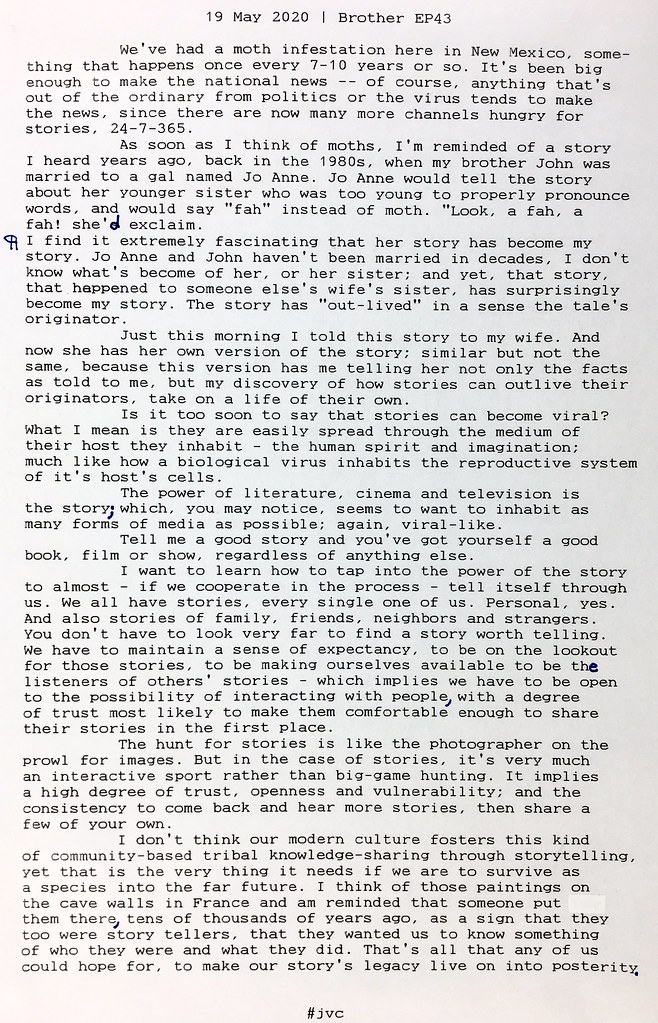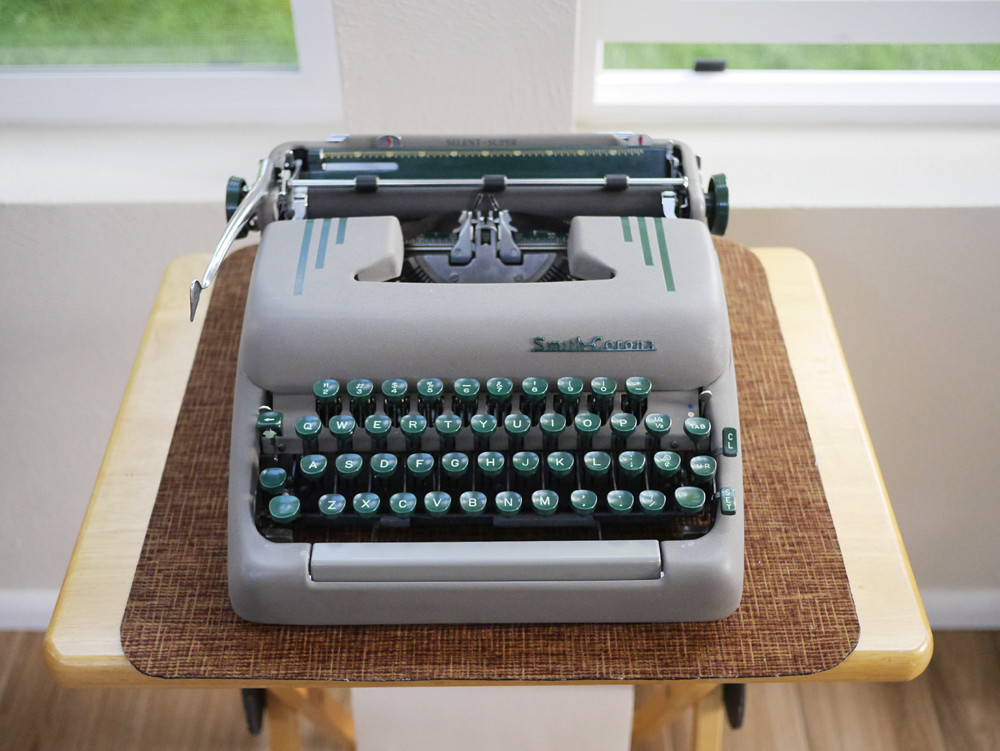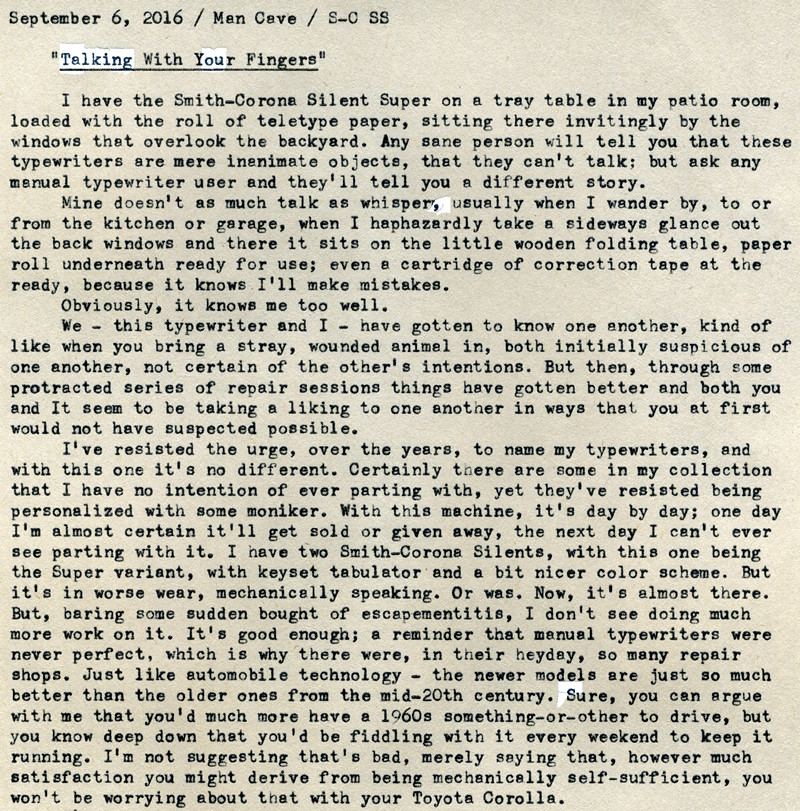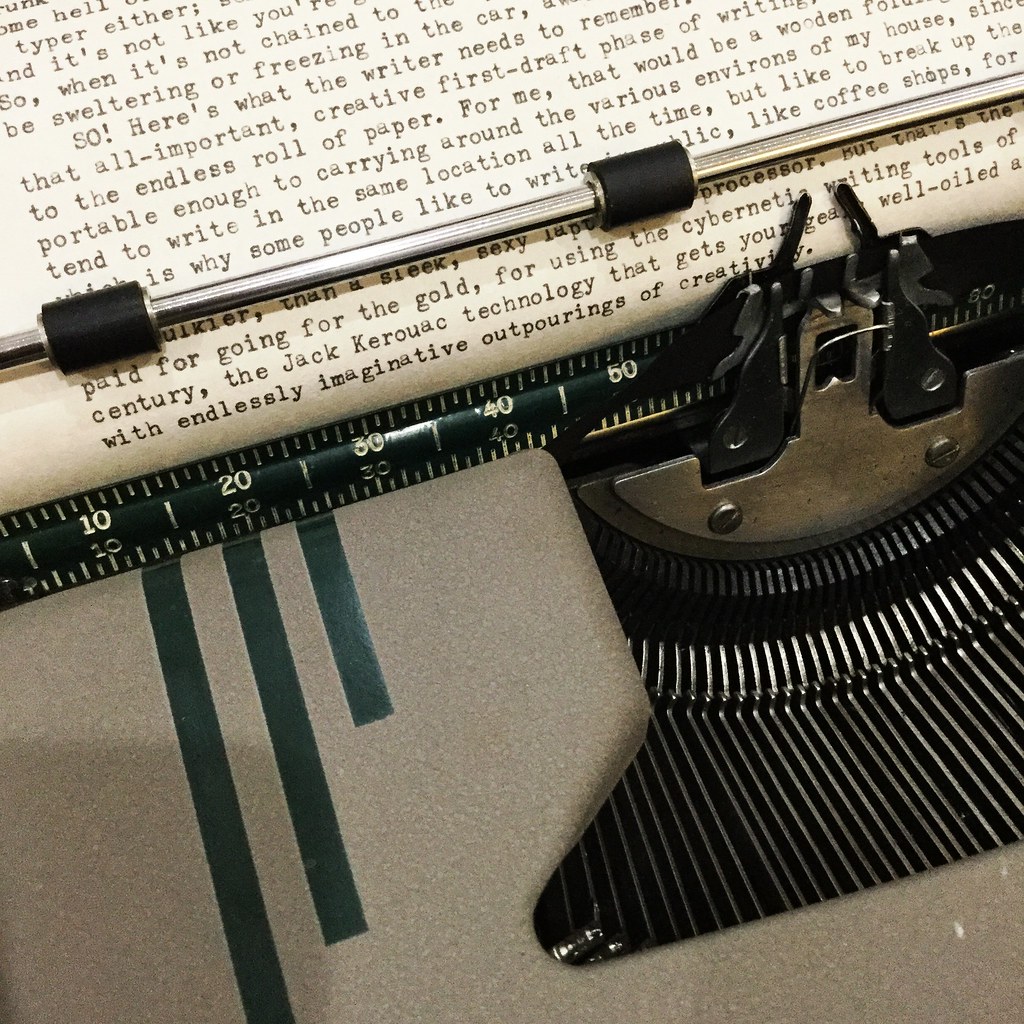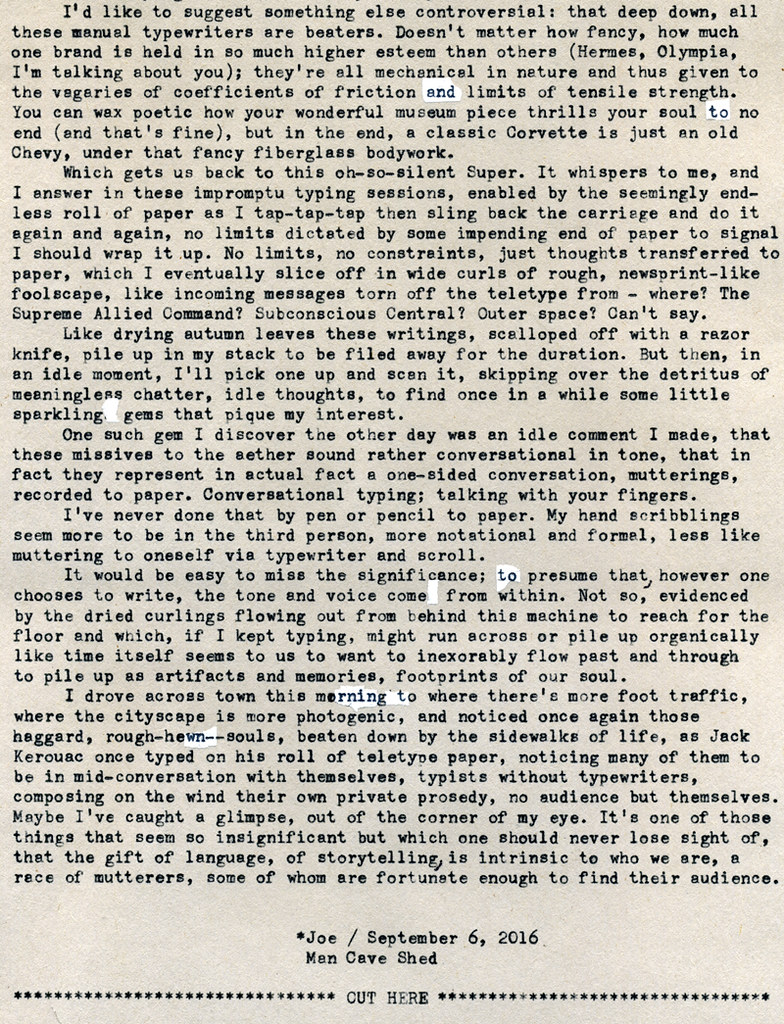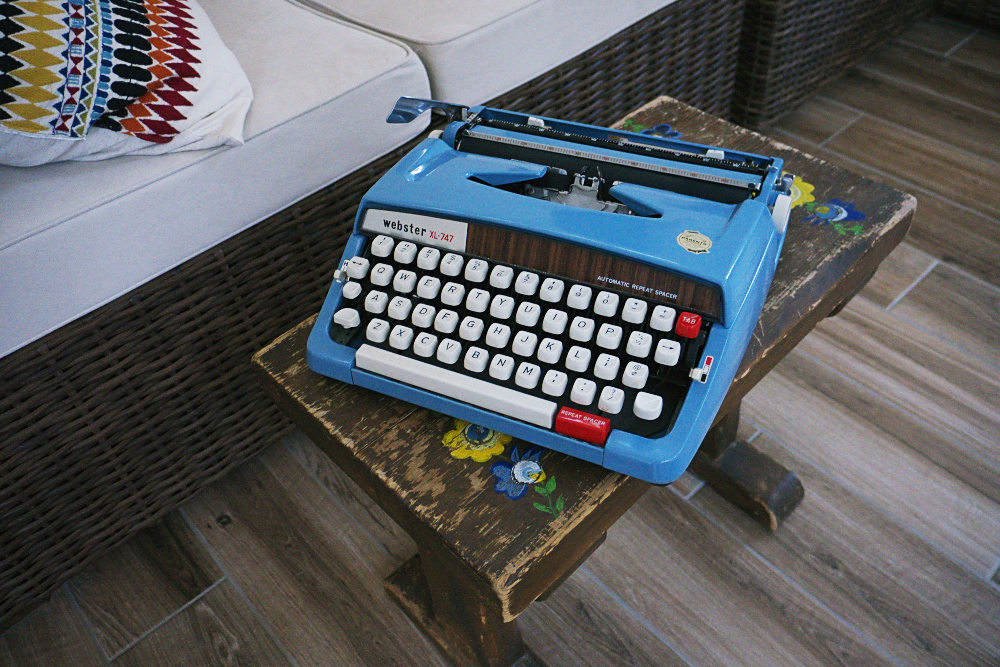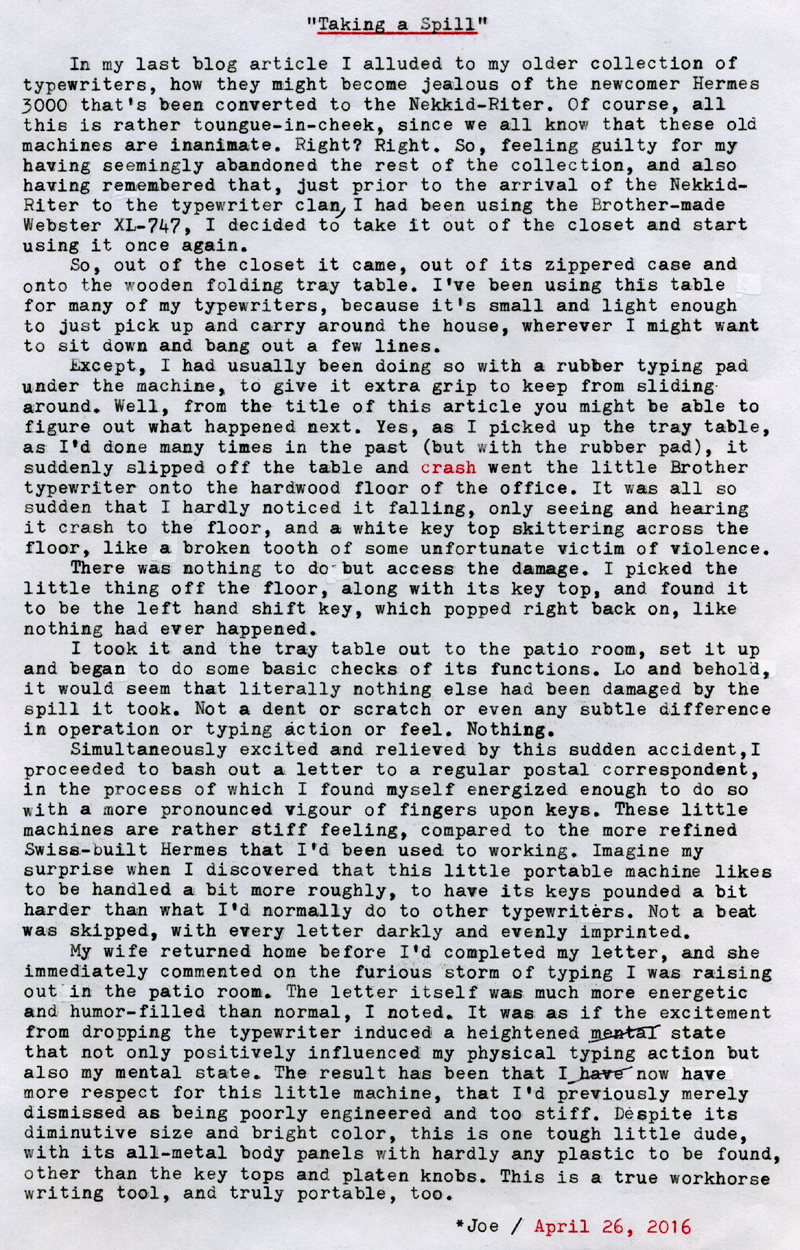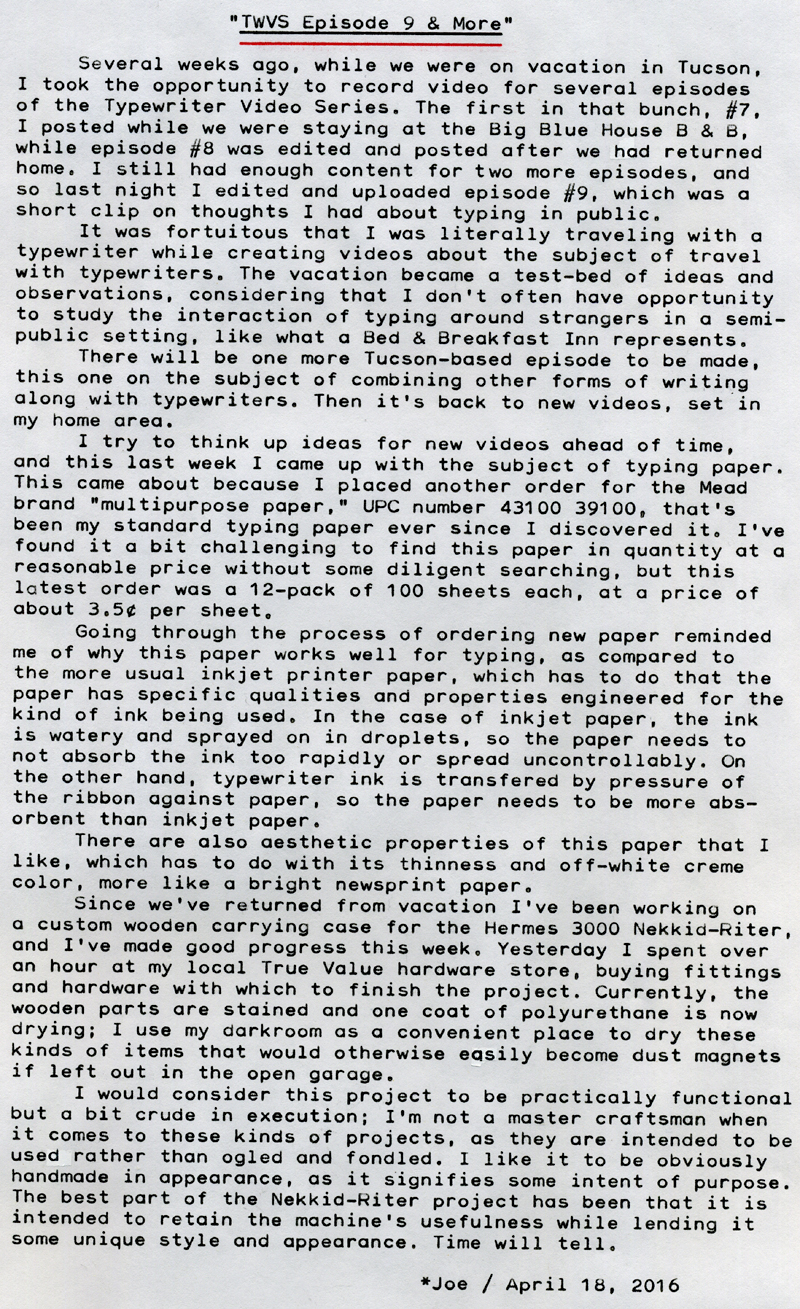 H
Help! I am being held captive by a blue mechanical AI. No, it's not some advanced artificial intelligence of the kind being developed by leading tech industry titans, but was something evidently created decades earlier, and made of all mechanical parts, like some steampunk automaton.
I know what you're thinking, that there's not enough complexity in a typewriter to account for its abilities I've observed this afternoon, while engaged in an extended typing session with the roll of teletype paper threaded up, to keep me chained to my chair, banging the keys and slinging the carriage back, a roll of intelligent prose (or nearly so) falling back behind onto the floor. But I have no better explanation to offer.
This Brother-made Webster XL-747 has even offered me a meaning to its name: Writing Enjoyment By Simply Typing Endless Randomness. At least, that's what came out on the paper roll. Who am I to argue?
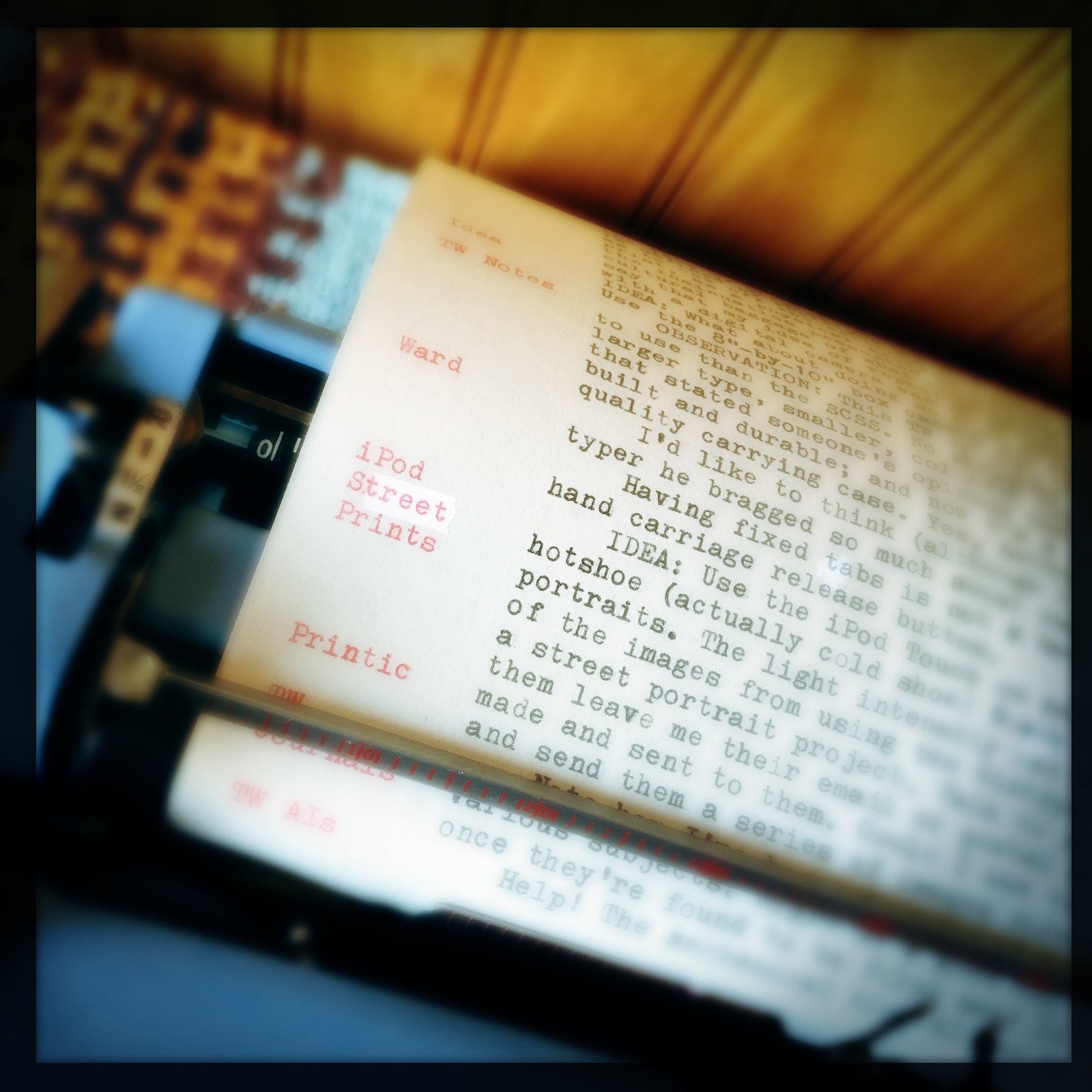 N
Now, there's something else it revealed to me: a way to organize these diverse scrolls of random writing by using the margin release button and red ribbon to make marginal notes along the lefthand edge, so that once filed away I can still easily locate individual topics.
I've been using Smitty, the Smith-Corona Silent Super, for a few weeks and, while it has a softer touch than this Brother, I've found I can type at least as fast, maybe faster. Yes, the touch of the keys is heavier, and it's carriage shift, but with my weird typing technique and my right elbow supported on the armchair I can accurately hit the keys harder, with great accuracy.
This little blue AI also is smaller, lighter, has the repeat spacer and a nice carrying case. This is one of those things about typewriter collecting that I hoped to achieve, to narrow down the collection to just those machines I really enjoy using. While at the Phoenix Type-In last month I sold both Olivetti Lettera 22s, which were both similar enough to this Brother in size and color but weren't as pleasing to use. I think I made a good choice, as this machine has essentially no mechanical issues whatsoever. It's a joy to type with despite its heavier touch because I don't have to pause for corrections like with other, more trouble-prone typers.
Now that this blue AI has used me for its own purposes of announcing itself to the world, I'm hoping it will have the kindness to permit me a good nights sleep before I return to work early tomorrow morning. But they're sneaky, these AIs are, so I must be on my toes.
Labels: Brother, LAROP, Man Cave, smith-corona silent super, typewriter collecting, Webster XL-747, weird typing

